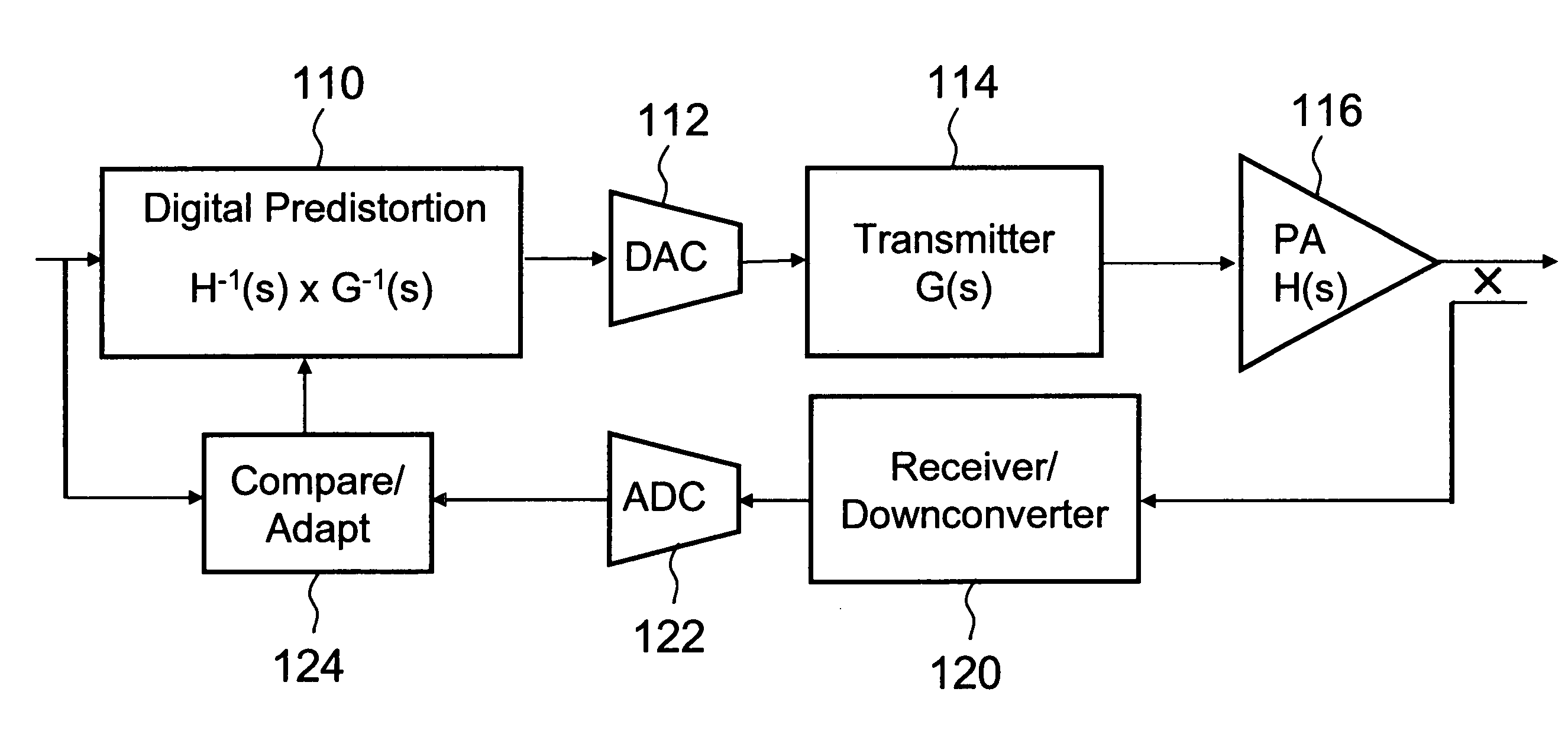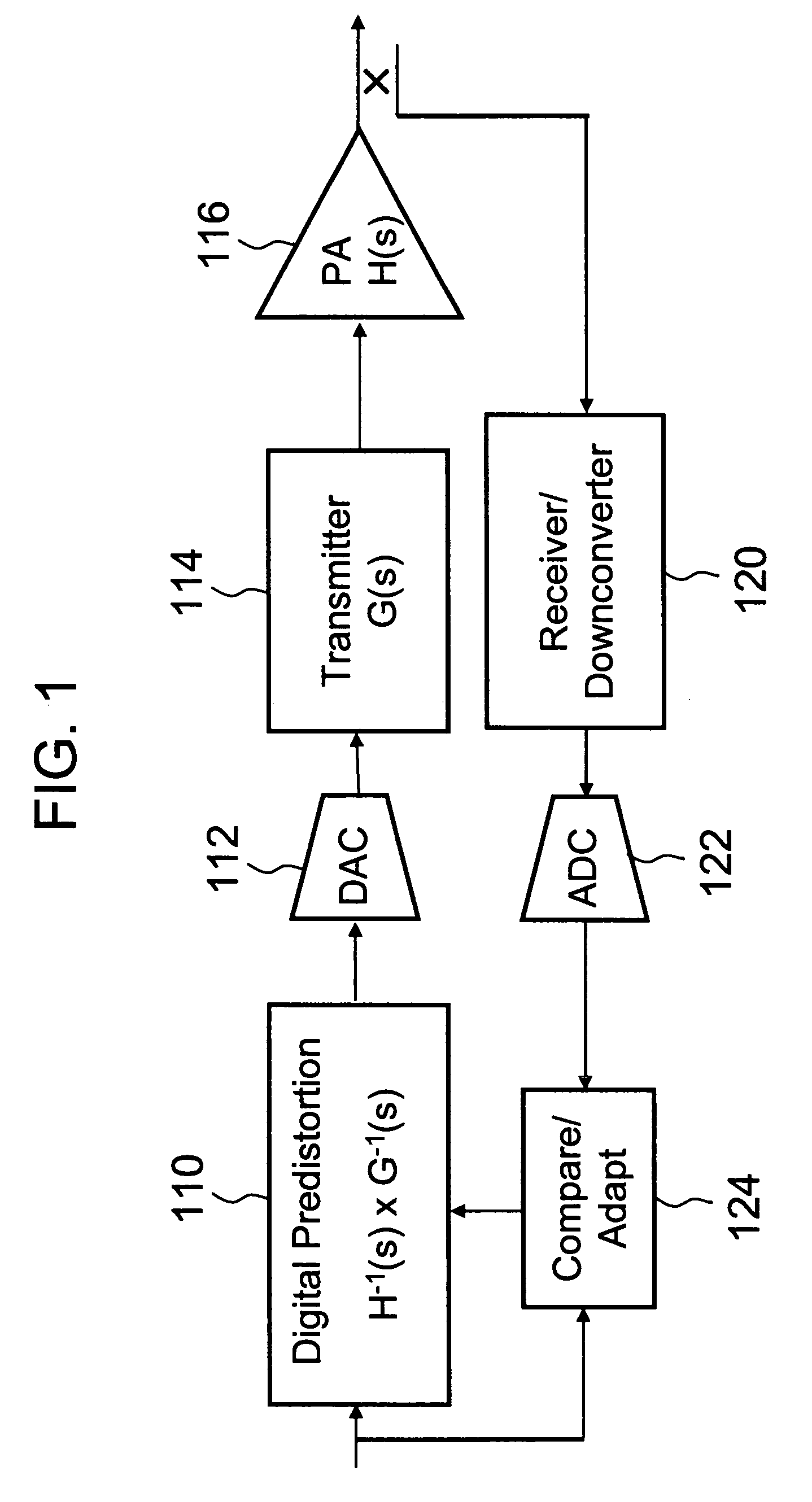Method of power amplifier predistortion adaptation using compression detection
a technology of compression detection and power amplifier, applied in the field of predistortion adaptation of power amplifier, can solve the problems of affecting the modulation accuracy of waveform, generating potentially excessive noise in adjacent carrier regions, and real amplifiers only linear within certain practical limits
- Summary
- Abstract
- Description
- Claims
- Application Information
AI Technical Summary
Benefits of technology
Problems solved by technology
Method used
Image
Examples
Embodiment Construction
[0032]In the following disclosure, AM / AM stands for amplitude-to-amplitude, and AM / PM stands for amplitude-to-phase.
[0033]The invention will now be described more fully hereinafter with reference to the accompanying drawings.
[0034]FIG. 1 illustrates an adaptive digital predistortion architecture with feedback. In most contemporary forms of digital predistortion, a digitized baseband waveform is predistorted by a Predistortion block 110 using a certain transfer function that represents the inverse of the expected power amplifier distortion characteristics. The predistorted waveform is converted by a digital-to-analog converter (DAC) 112. In order to ensure this predistortion transfer function is accurate and to compensate for variations of the characteristics of transmitter 114 and power amplifier 116, the sample of the output waveform of power amplifier 116 along with its intermodulation products are downconverted, demodulated, digitized and this digitized feedback waveform is compa...
PUM
 Login to View More
Login to View More Abstract
Description
Claims
Application Information
 Login to View More
Login to View More - R&D
- Intellectual Property
- Life Sciences
- Materials
- Tech Scout
- Unparalleled Data Quality
- Higher Quality Content
- 60% Fewer Hallucinations
Browse by: Latest US Patents, China's latest patents, Technical Efficacy Thesaurus, Application Domain, Technology Topic, Popular Technical Reports.
© 2025 PatSnap. All rights reserved.Legal|Privacy policy|Modern Slavery Act Transparency Statement|Sitemap|About US| Contact US: help@patsnap.com



